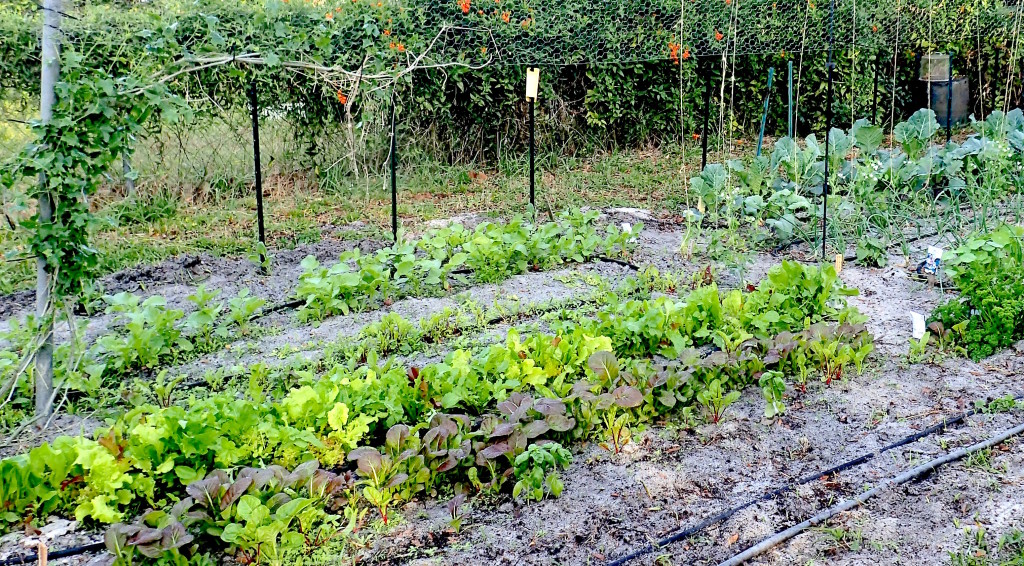
Besides a lot of salad ingredients thus far I’ve pickled four quarts of collards, two of mustard greens, and dried three pounds of scallion tops. Peas are in blossom.
One of the advantages of being a forager is you know what weeds are edible in your garden. To a weed a garden is disturbed soil. If you do not weed a garden the weeds will take over. That’s a big hint they don’t need man to get the job done. It also suggests all you really need to do is harrow the ground then just leave it. Weeds will populate it. Although I recently down-sized I still have a small four-season garden, 15 by 30 feet. We are transitioning out of the winter garden into the spring garden. The winter garden is mostly members of the mustard family as they can take a light frost or freeze. Our spring garden is like a summer garden up north, as is the fall garden except with more insects. The summer garden is only plants that can take the heat such as sweet potatoes, Ivy Gourd, cherry tomatoes, Malabar spinach et cetera. The spring garden is by far the more enjoyable and productive.
“Weeding” is an opportunity to add to the kitchen fare and get some sun-generated vitamin D (as is mowing a lawn. I am a strong advocate of sensible sun exposure and keep my D level around 80 ng/ml all year.) The most common non-edible weeds I see, which go to the compost pile, are Canadian Toad Flax and Cud Weed. Young edibles for the kitchen include Poor Man’s Pepper Grass, Spanish Needles and Amaranth. A weed that confounded me until I let one grow up was Western Tansy Mustard, quite edible but I wanted to be sure. Last year I let the Ivy Gourd have its way and this year it is coming up all over the garden. Like sweet potatoes it can provide ground cover to cool the summer soil and shade out unwanted weeds. Gardening is not difficult but gardens much like pools do require constant attention or you have problems that are hard to correct.
All of this does bring up a couple of foraging techniques. Disturbed ground is a good place to look for edible wild plants. This includes turned soil, new ditches, piles of dirt, and construction sites. Many weed seeds can remain dormant for decades even just a few inches below the surface of the ground. A shift in that can produce a bounty of edibles. In Port Charlotte, for example, a shack along the river’s edge was removed and the ground scraped and leveled. Within weeks it was covered with thousands of young Amaranth plants. The four places I always look for wild edibles is disturbed soil, ditches, water spots, and transition zones. The latter are the areas between two different kinds of growth patterns: Lawn to shrubs, field to forest, river to bank, deep shade to bright sun. Not only do plants flourish in these environments but it is also where wild animals travel which can also leave seeds for new plants.
This is also a good time to expound a little on the little Western Tansy Mustard. It is very mild, even more so than the mild Shepherd’s Purse. It can also be found this time of year in the more northern areas of the state. The Tansy Mustard has very specific growing conditions: Cool and dry. At the Florida Herbal Conference last week it was a common site in the field that was used for a parking lot. I first found it decades ago around paddocks and other high, dry dusty areas. And while they are colonial they are sparsely so, not so much a bunch of them as a spread. I think their texture comes across as dry so while they are edible raw I prefer to cooked in something like soups or stews. Oh, and just to confuse things there isn’t an Eastern Tansy Mustard.
Upcoming Foraging Classes:
Sunday, March 13th, Blanchard Park, 10501 Jay Blanchard Trail, Orlando, FL 32817. This is a new location. We will meet at the pavilion next to the tennis courts. I visited the location this week and saw about 40 edible species on my first viewing. As this is the first class in a new location there is no charge. We can explore the park together. 9 a.m.
Saturday, March 19, Colby-Alderman Park: 1099 Massachusetts Street, Cassadaga, Florida, 9 a.m.
Saturday, March 26th, Dreher Park, 1200 Southern Blvd., West Palm Beach, 9 a.m.
Sunday, April 3rd, John Chestnut County Park: 2200 East Lake Road, Palm Harbor, Florida, 9 a.m.
Sunday, April 10th, Wekiva State Park, 1800 Wekiwa Circle, Apopka, Florida 32712. 9 a.m.
Sunday, April 17th, Bayshore Live Oak Park, 2200 East Lake Road, Port Charlotte, Florida. 9 a.m.
Sunday, May 1st, Wickham Park: 2500 Parkway Drive, Melbourne, Florida 9 a.m.
For more information about classes go here.
Wild food is everywhere. I stopped at a neighbor’s house to take the picture to the right. Her lawn is studded right now with Spiny Sow Thistle. Don’t let the name dissuade you: The leaves are soft when young and quite tasty lightly cooked. She also had Oxalises, False Hawk’s Beard, Pellitory, Poor Man’s Pepper Grass, an ornamental sweet potato vine and yellow hibiscus in blossom. She was fretting that she needed to mow her lawn. I would call it a Front Yard Salad or the good making for a mess of greens. The only precaution is too many yellow blossoms can have a laxative effect, be they hibiscus or violets et cetera. Some of you have lawns now that are under snow but in a few months they will be producing wild edibles. Will you mow or eat them this year?
Want to identify a plant? Perhaps you’re looking for a foraging reference? You might have a UFO, an Unidentified Flowering Object you want identified. On the Green Deane Forum we — including Green Deane and others from around the world — chat about foraging all year. And it’s not just about warm-weather plants or just North American flora. Many nations share common weeds so there’s a lot to talk about, such as the one to the left. There’s also more than weeds. The reference section has information for foraging around the world. There are also articles on food preservation, and forgotten skills from making bows to fermenting food. Recent topics include: New Mystery. Aesculus pavia. Bull Thistle? What A Waste. Like a Viola. Viola Bicolor. Urban Lawn Weed. Drymaria Cordata. Wild Blueberry blossoms? Foraging Group Ft. Lauderdale. Red Berries. New Member Jacksonville. Huge Thorns on Leaves. How Could An Infant Be Fed By Foraging? Antiseptic and Antihistamine. Gourmet Foraging. Conyza and Chlorophyll. And Can Anyone Tell Me The Name of This Plant? You can join the forum by clicking on the button on the upper right hand side of this page.
All of Green Deane’s videos are available for free on You Tube. They do have ads on them so every time you watch a Green Deane video I get a quarter of one cent. Four views, one cent. Not exactly a large money-maker but it helps pays for the newsletter. If you want to see the videos without ads and some in lightly better quality you can order the DVD set. It is nine DVDs with 15 videos on each. Many people want their own copy of the videos or they have a slow service and its easier to order then to watch them on-line. They make a good gift for that forager you know. Individual videos can also be ordered. You can order them by clicking on the button on the top right of this page or you can go here.
And on a personal note I would like to thank everyone who attended the foraging class this past week in Jacksonville. It’s not easy being in such a large group but you made the day enjoyable. Thank you.
This is newsletter 199.
If you would like to donate to Eat The Weeds please click here.

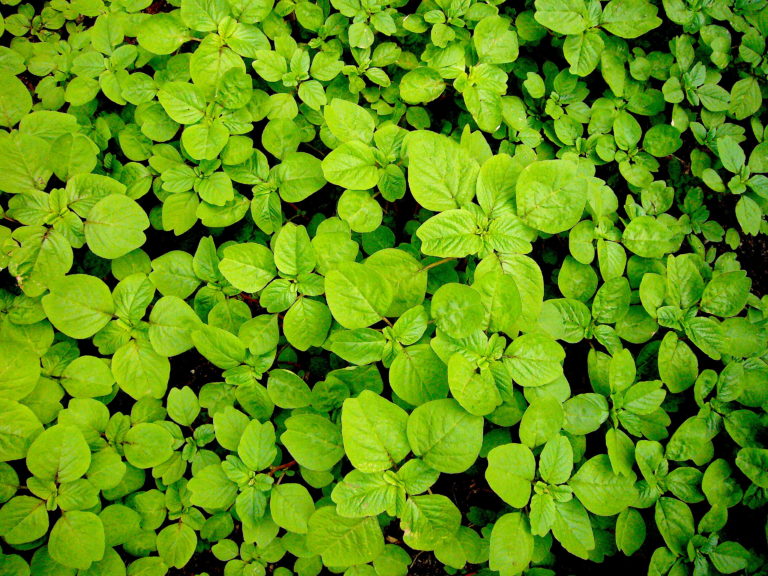
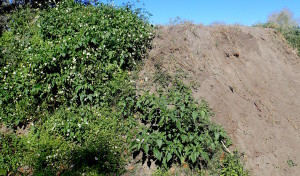

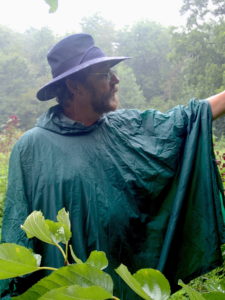


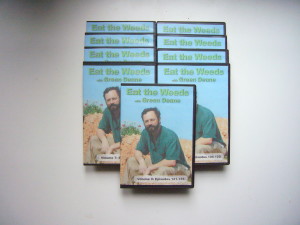

From Farouk Hussein: Early in this morning as one of plans of priority for today is to transplant many of American Nightshade (Solanum nigrum) plants. Previously I had one plant in my garden that has shared growth with a cactus in my garden and I thought to reproduce it so that I may collect enough black berries for making jam. Few days ago I’ve observed a patch of the same plant living happily – some blossoming, others fruiting and even a new generation has shown. Indeed as said the place is favourable, more so than in my garden. Another proof is that the number of seeds per berry is about three times that of the plant in my garden. Plainly as you mentioned, the locality is piles of dirt neighbouring a newly erected three storey building not far from where I live.
To confirm my love to the yellow Soncus flower, I’ve decided to grow the Sow Thistle in my garden as ornamental. Now I have before me only one plant blossoming. I enjoy looking at the flower in the morning and after a short period I return to trap using the thumb and first finger the seeds before they fly with the wind. Wonderful, from one catch of this now white silk or cotton like matter, one can grow a lot. Nature is generous; is’nt that so ?
On seasons ,if you won’t mind, here is what the famous philosopher and poet says : “ Now I realize that trees blossom in Spring and bear fruit in Summer without seeking praise and they drop their leaves in Autumn and become naked in Winter without fearing blame.
Farouk,
Just in case you read this, I wanted to let you know how enjoyable your frequent posts to this site are. They add much enjoyment nearly every
time I visit EatTheWeeds.
Best regards-
I ascertain the fact that I always reread each issue of Eattheweeds and follow every new comment. Our thanks for the great man – source and originator – Green Deane , who made this useful vivid activity available. This time how pleased and happy I am to find another famous character – RM Mc Williams encouraging me to continue company on the same respectful path. Many thanks and best regards to RM Mc Williams . I do share the same feeling towards your writings. “ He has not thanked Allah who has not thanked people. “ – Holy saying – p.b. u. h.